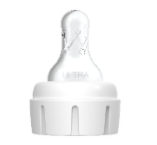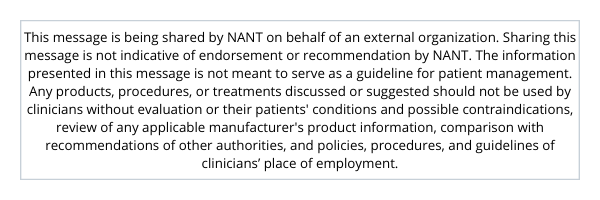
Consistency in feeding is key. In fact, a NANN statement reads “A relationship exists between the consistency and continuity of feeding management practices and improved performance.”
This statement describes a key piece of information we have incorporated into feeding practices in the NICU over many years. It is known that feeding is a repetitive experience and much of the responsibility of wiring these experiences in a positive manner is up to feeding specialists as the ‘Keepers of the Brain.’ Thanks to research, a major component through the past few years has demonstrated that feeding with disposable nipples and bottle systems results in inconsistent feeding experiences with EACH feed for your infants. By providing consistent, reliable flow rates, infants will experience a more positive feeding experience with every bottle feed.
NOW – The “Plot Thickens.” A recent study by Pados & Melon reports that even with consistent, reliable nipples, there becomes a greater variation in flow rate with increased thickness and the greatest amount of flow variability occurring with mildly thick liquids.
The inconsistency of flow rate with thickened liquids, combined with the other factors/disadvantages of thickeners, guide the decision-making process.
- Thickening activity of different agents
- Time and temperature factors
- Formula type discrepancies
- User error
- Unclear effects on infants’ microbiome
Does this mean never thicken liquids? Probably not.
What we can learn regarding thickening.
1. In general, thickening should NOT be a first line resort.
“When airway protection during oral feeding can be achieved by limiting the flow rate alone, without the addition of thickeners, this should be done.” (Pados & Mellon 2021)
“Thickeners should be used only as the last resort in the NICU, only after changing feeding position, slowing nipple flow rate, and using contingent co-regulated pacing to support the swallow-breathe interface and assure timely and sufficient breaths.” (Shaker Aug 2019 ASHA Leader column)

2. There are certain thickened consistency recommendations where the use of a non-thickened liquid with a consistent, reliable, slow flow nipple/bottle system can achieve the same flow rate. Researchers are beginning to provide data describing these relationships between nipples and thickness combinations. For example, if an infant is receiving a mildly thick formula from one nipple, there could be a different nipple/bottle system to achieve that same flow rate with a non-thickened liquid (Pados and Mellon, McGrattan).
The topic of thickening cannot rest with thickening for oropharyngeal dysphagia alone. Especially, since at times in the NICU, feedings are thickened for reflux. Although GER is not technically a therapist’s area of expertise, they are often consulted on how to deliver this nutrition safely and efficiently to the infant. Again, as “Keepers of the Brain”, can you do more?

It has been suggested that perhaps other non-pharmacologic holistic strategies can be used by nurses, therapists, and parents to manage symptoms of GER. These strategies target stress, dysbiosis, food intolerances, feeding difficulties, and positioning (Pados 2020). Regarding stress, recent literature has described the effects that stress has on the sympathetic nervous system (SNS).
“In response to stress, the infant’s body diverts blood away from the gastrointestinal tract and toward the brain, heart, and lungs, which decreases motility, digestion, and absorption, further detracting from nutrient uptake and growth and contributing to symptoms of enteral feeding intolerance.” (Pados 2019) There is a biologic foundation for the use of Skin to Skin Care, for example, for reducing stress in infants receiving intensive care.
YES – The Plot Thickened. As feeding therapists, can you change the stories being written of infants in the NICU? Thickening will most likely never go away, and in some cases must be done. Although, as you continue to provide more consistent and reliable, neuroprotective care, in ALL areas, perhaps supporting more positive feeding outcomes should be a major priority?
For more information on how your unit can provide more consistent and reliable feeding solutions, please contact us at Dr. Brown’s Medical™, www.drbrownsmedical.com
Click here for references.

